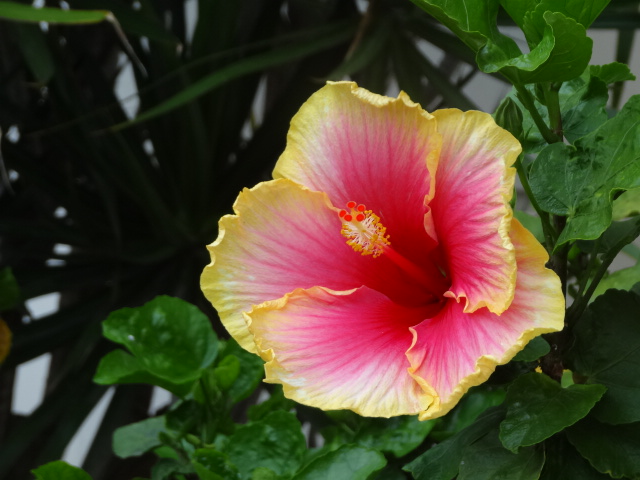Maputo, the capital of Mozambique, is a fascinating city … noisy, gridlocked,lively, colourful. Emerging from a long civil war, this City of Acacias is a melting pot of Portuguese, Shangaan, Arab and Indian, and increasingly Chinese, influences.
In many places, fine Portuguese buildings remain in decay or are adapted to accommodate a burgeoning population. The historic Polana Hotel, however, has risen from the ashes and is now set in beautiful grounds overlooking Maputo Bay. Designed by the architect Sir Herbert Baker, a huge influence in South African public buildings such as the Union Buildings in Pretoria, it opened in 1922 “with very few hotels in Europe to equal its conditions.”
During the Second World War, as part of the Portuguese empire, it became notorious as a neutral meeting place for spies and secret agents from Germany, Italy and the Allied Forces. Sitting under the ceiling fan on the verandah, sipping a g & t, it’s easy to imagine the exchanges taking place, deals and double deals, information bought and sold. All it needs is a pianist and Ingrid Bergman urging him to “Play it once Sam, for old time’s sake”…. but that was another part of Africa, wasn’t it?
The hotel fell into decline, when 250,000 Portuguese left hurriedly in 1975 and a civil war ensued, but happily was rescued by the Aga Khan Foundation for Economic Development in 2002.
Maputo is famous for its avenues of flowering acacias, which surround the gardens of the Polana. There’s a wide range of colourful hibiscus surrounding the entrance and the steaming heat releases the fragrance of the frangipani trees, whilst fountains drip water languidly.
There are hedges of sky blue Plumbago and drifts of Agapanthus, soft blues always refreshing in temperatures nearing 40C.
Arab and Portugueses influences are seen in the courtyard gardens of the Spa, where water and shade are strong elements, alongside cool blue patterned tiles.
The Art Nouveau style of the formal Delagoa dining room overlooks a structured garden of clipped hedges and fountains, the formality of the former reflected in the garden.
In the searing heat, a welcome wind drifts up from the Indian Ocean, fishing boats return to port with their haul of tiger prawns, for which Mozambique is famous, along with the fiery heat of its peri-peri sauces. Outside the walls there’s the dim hum of rush hour traffic and in the gardens cicadas start up their evening clicking song.
Must be about time for that g&t on the verandah…











Wow, this looks so lovely…cheers my friend! Your photos are really wonderful, I especially like the arched view of the fountain.
LikeLike
Thanks so much Jet.
An oasis of beauty in a fascinating but chaotic city.
LikeLike
Thanks for another great tour. I see many plants that grow on the Gulf Coast.
LikeLike
Glad you enjoyed it – thanks so much. I suppose what seems exotic and colourful to my eye is almost commonplace on the Gulf Coast.
LikeLike
I really like the garden tour of this city hotel. It’s so wonderful to see that it has all been restored
LikeLike
Thanks Matt, glad you enjoyed the brief tour. I’m glad the Polana was restored and I’m hoping many of the older buildings might be too, rather than razed hurriedly to the ground.
LikeLike
You make me long to go there right now…..and its been 18months since I had an adventure…still writing about the last one…in Peru….love the flower photos….I have a cousin living on the coast of Mozambique…maybe time to reunite..
LikeLike
So glad you enjoyed the post … and go see Mozambique before the crowds discover it. Maputo is fascinating – but you have to dig around to find the fascinating bits. It’s vibrant and a bit chaotic and a blend of many cultures. Will write a little more about it perhaps.
Haven’t been to Peru (yet?) and will be sure to check out what you’ve written.
LikeLike
Ahh…thankyou Jardin….I’m describing a personal adventure in Peru and hoping to enchant the reader with Peru at the same time…I spent 9 weeks in a v unique and historical little town..it was v rewarding…
LikeLiked by 1 person
Lovely gardens, and I enjoyed reading about the history of this hotel. That spa pic reminded me so much of my Moroccan holiday. 🙂
LikeLike
Thanks Sylvia, glad you enjoyed the post.
I agree about the Spa (which was gorgeous), it was very reminiscent of Morocco.
LikeLiked by 1 person
Reblogged this on Old School Garden.
LikeLiked by 1 person
What a beautiful and intriguing place. The gardens are beautiful, especially the agapanthus.
LikeLiked by 1 person
Thanks Cynthia. The gardens are certainly lovely. The interior is also beautiful but I think it needs to acquire the patina of age.
LikeLiked by 1 person
How wonderful when a garden treasure is restored. I’ve loved hearing about such lovely makeovers since reading The Secret Garden as a child.
Blessings ~ Wendy ❀
LikeLiked by 1 person
I do agree. I have loved transforming neglected gardens, especially historic ones. Thanks for your lovely comment Wendy.
Lorna.
LikeLiked by 1 person
Pingback: The restored gardens at the Polana Serena Hotel, Maputo – Ismailimail